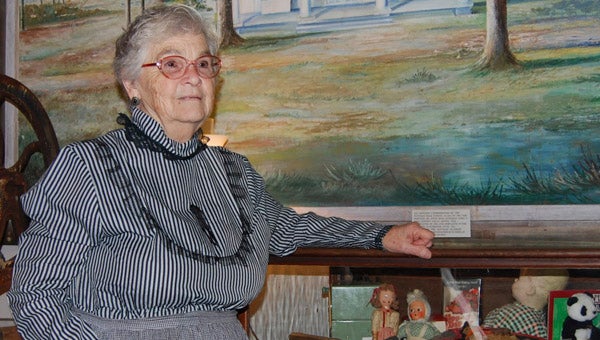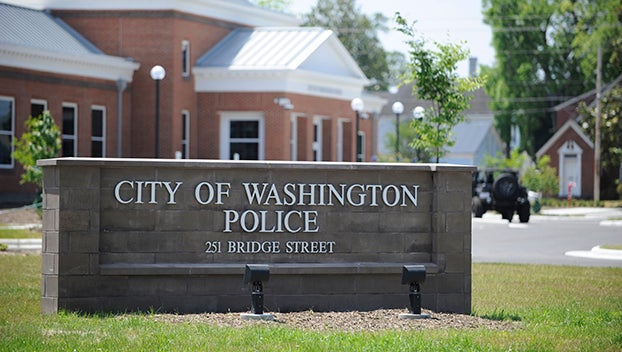Hollowell knows Pantego’s past like few others
Published 5:25 pm Wednesday, September 2, 2015

KEVIN SCOTT CUTLER | DAILY NEWS
LOCAL HISTORIAN: Jenny Respess Hollowell enjoys researching Pantego area history and is always eager to share her knowledge with other local historians.
PANTEGO — It was almost predestined that Jenny (Virginia Dare) Respess Hollowell would be interested in history. Her birthday virtually assured that.
Born and raised on Pike Road, Hollowell entered this world on Aug. 18, 1937. That day was cause for celebration in eastern North Carolina, but not because of the new Respess baby.
“The president of the United States, Franklin Delano Roosevelt, was in Manteo that very day awarding Virginia Dare her birth certificate,” said Hollowell, referring to the first child born to English parents in the New World. “They issued a coin that day, a 50-cent piece, and the post office issued a stamp that day. So the world didn’t pay much attention to me, but that is why I was named Virginia Dare. I think that has something to do with my love of history.”
Hollowell entered first grade at the public school in Pantego, but the family then spent the next year living in Virginia where her father found work as a civil servant. She came back home for third grade and finished the balance of her education there, graduating as a member of Pantego High School’s class of 1955.
While in school, Hollowell said she particularly enjoyed a U.S. history course taught by Gladys Lollis, which further cemented her interest in history. She added that Lollis taught her mother as well as Hollowell’s children, resulting in a remarkable span of three generations.
Hollowell married and raised a family, but her interest in history never waned. She began researching her family history, making frequent trips to courthouses in Washington and Plymouth.
“I traveled between those two … it was very convenient for me to go and start researching,” she recalled. “I began with my Respess line, and then I did my Cutler and Webster families.”
Hollowell learned that an ancestor, James Webster, hid away on a ship leaving Liverpool, England for America around 1820 to 1830. The stowaway waited several days before making his presence known and he eventually landed in New York or Norfolk, depending on different family versions of the story. His passage was paid for and he became a sort of indentured servant, coming to Beaufort County to work at Rodman’s Quarter plantation, according to Hollowell.
Webster stayed in the area, marrying and starting a family. Hollowell’s Webster grandfather later built the Webster School that once served students in the Free Union community.
After researching her family histories, Hollowell turned her attention to the former Pantego school, originally a subscription school known as the Pantego Male and Female Academy. Tuition was two cents a day, she learned.
The old academy still stands, serving as the back portion of what is now the Pantego Academy Historical Museum. In 1907, Hollowell noted, the county purchased the academy and a front portion was added to the building. This became the first Pantego High School.
Hollowell is proud of the fact that three generations of her family graduated from Pantego High School. In 1925 a brick building was constructed nearby and that became the new high school; ironically, that brick building has since been demolished but the original wood structure remains.
Fast forward a few decades … in 2005 Hollowell and others interested in local history saw a notice in the Washington Daily News about a planned meeting to discuss the future of the former academy building. More than 30 concerned citizens attended the meeting and a Pantego Alumni Association was organized.
Their mission was to save the landmark, which had been ravaged by time and rodents. They went on a cleaning spree.
“We went through each bit of paper, piece by piece,” Hollowell recalled. “It was a big mess, as you can imagine.”
Debris was cleared away and repairs were made. By late 2005, the efforts of the group resulted in an open house. Artifacts were gathered and displayed and a fundraising auction was launched.
The Pantego museum became a reality. Today, the museum is open each Saturday and Sunday from 2 to 4 p.m.
For more on recent exhibit changes and additions to the museum, see next week’s Pungo Living in the Daily News.





